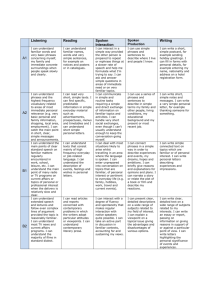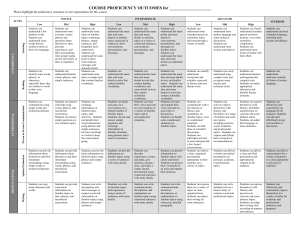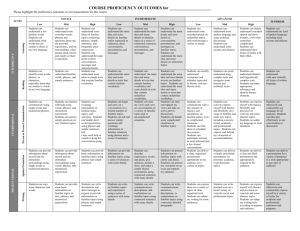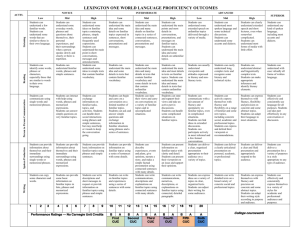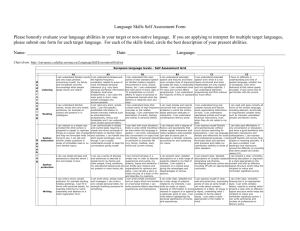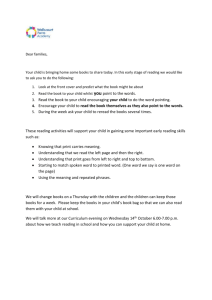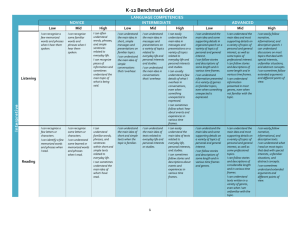COandProfLevelsSlips
advertisement
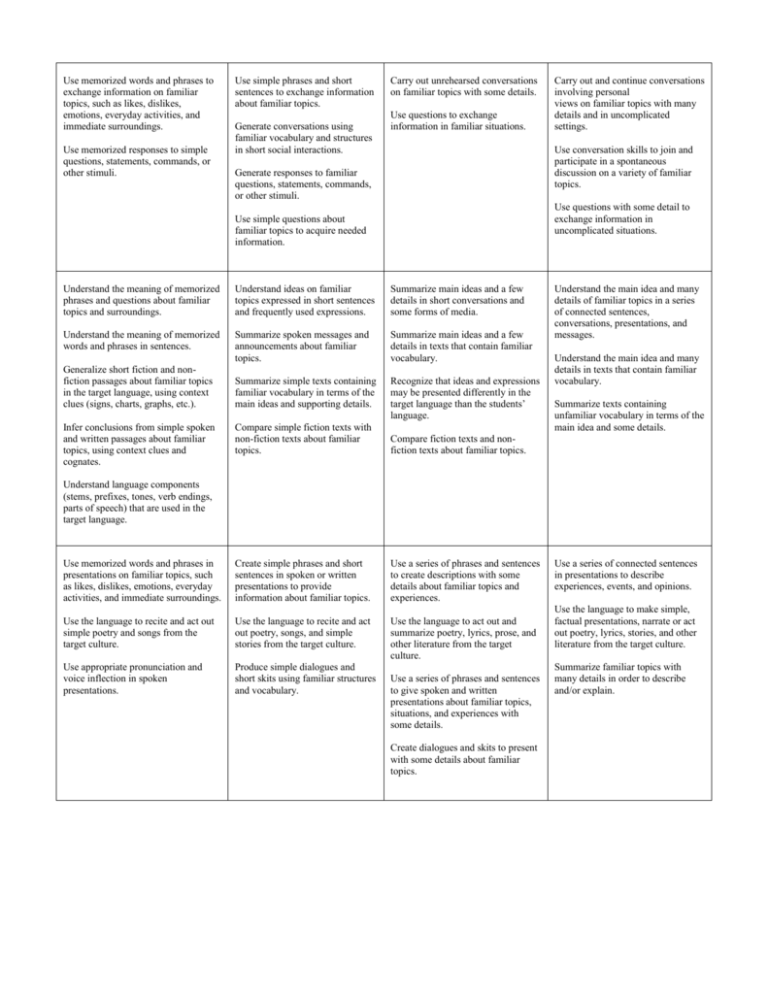
Use memorized words and phrases to exchange information on familiar topics, such as likes, dislikes, emotions, everyday activities, and immediate surroundings. Use memorized responses to simple questions, statements, commands, or other stimuli. Use simple phrases and short sentences to exchange information about familiar topics. Generate conversations using familiar vocabulary and structures in short social interactions. Carry out unrehearsed conversations on familiar topics with some details. Use questions to exchange information in familiar situations. Use conversation skills to join and participate in a spontaneous discussion on a variety of familiar topics. Generate responses to familiar questions, statements, commands, or other stimuli. Use questions with some detail to exchange information in uncomplicated situations. Use simple questions about familiar topics to acquire needed information. Understand the meaning of memorized phrases and questions about familiar topics and surroundings. Understand ideas on familiar topics expressed in short sentences and frequently used expressions. Summarize main ideas and a few details in short conversations and some forms of media. Understand the meaning of memorized words and phrases in sentences. Summarize spoken messages and announcements about familiar topics. Summarize main ideas and a few details in texts that contain familiar vocabulary. Summarize simple texts containing familiar vocabulary in terms of the main ideas and supporting details. Recognize that ideas and expressions may be presented differently in the target language than the students’ language. Generalize short fiction and nonfiction passages about familiar topics in the target language, using context clues (signs, charts, graphs, etc.). Infer conclusions from simple spoken and written passages about familiar topics, using context clues and cognates. Carry out and continue conversations involving personal views on familiar topics with many details and in uncomplicated settings. Compare simple fiction texts with non-fiction texts about familiar topics. Compare fiction texts and nonfiction texts about familiar topics. Use memorized words and phrases in presentations on familiar topics, such as likes, dislikes, emotions, everyday activities, and immediate surroundings. Create simple phrases and short sentences in spoken or written presentations to provide information about familiar topics. Use a series of phrases and sentences to create descriptions with some details about familiar topics and experiences. Use the language to recite and act out simple poetry and songs from the target culture. Use the language to recite and act out poetry, songs, and simple stories from the target culture. Use the language to act out and summarize poetry, lyrics, prose, and other literature from the target culture. Use appropriate pronunciation and voice inflection in spoken presentations. Produce simple dialogues and short skits using familiar structures and vocabulary. Understand the main idea and many details of familiar topics in a series of connected sentences, conversations, presentations, and messages. Understand the main idea and many details in texts that contain familiar vocabulary. Summarize texts containing unfamiliar vocabulary in terms of the main idea and some details. Understand language components (stems, prefixes, tones, verb endings, parts of speech) that are used in the target language. Use a series of phrases and sentences to give spoken and written presentations about familiar topics, situations, and experiences with some details. Create dialogues and skits to present with some details about familiar topics. Use a series of connected sentences in presentations to describe experiences, events, and opinions. Use the language to make simple, factual presentations, narrate or act out poetry, lyrics, stories, and other literature from the target culture. Summarize familiar topics with many details in order to describe and/or explain.


